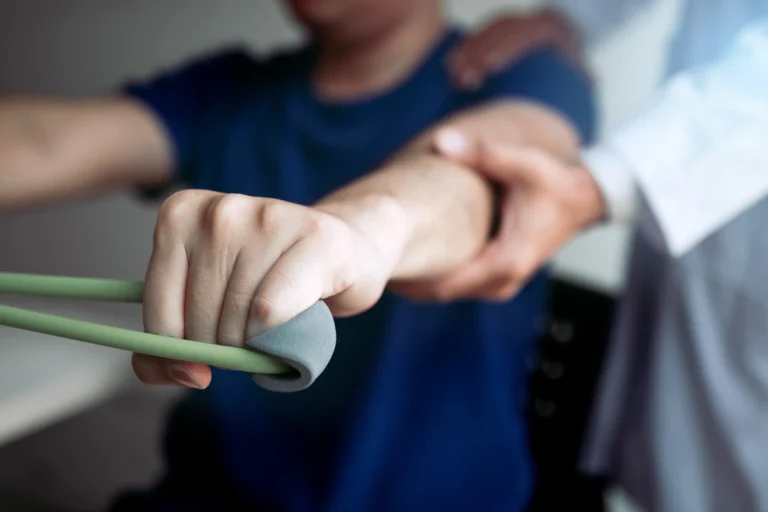
How Long Should You Go To Physical Therapy After An Accident?
The length of time you should attend physical therapy after an auto accident depends on factors unique to your injury and recovery journey. No two individuals or injuries are exactly alike, so your post-accident recovery could span a few weeks to several months. The severity of your injury, your initial health status, and your specific injury timeline will all influence the ideal physical therapy duration. Most importantly, sticking to your plan and regularly reassessing your progress with your therapist are essential for optimal healing and regaining your active lifestyle.
How Long is Too Late for Physical Therapy After an Accident: Factors That Determine PT Duration
Physical therapy timelines are influenced by several key elements, such as the severity and type of your injury, pre-existing health conditions, and your personal recovery goals. Common injuries sustained in car accidents include whiplash, fractures, sprains, and soft tissue injuries, and the specific type of injury can significantly impact the length of therapy required. For example, minor strains or whiplash injuries might resolve with a shorter duration of therapy, depending on factors like muscle strength, while more significant injuries, such as fractures or severe soft tissue injuries, often require an extended period of rehabilitation. Your commitment and consistency with at-home exercises and lifestyle adjustments, as well as following individualized treatment plans, will also affect your overall progress.
Typical Timelines: A Few Weeks To Several Months
Many active adults see improvements within the first few weeks, especially when starting therapy soon after the accident. For soft tissue injuries, recovery often takes six to eight weeks, with this timeframe guiding treatment planning and expectations. However, it is not uncommon for recovery to last two or three months—or longer—in the case of complex or severe injuries. These timelines aren’t set in stone; your needs and responsiveness to therapy play a major role in determining how long you’ll need to continue. Attending all your scheduled physical therapy sessions at Bull City PT ensures each step in your recovery is carefully monitored and adjusted for best results.
Evolution Of Therapy Phases
Your rehabilitation usually progresses through three phases: the initial acute stage (focused on pain reduction and managing inflammation, often using modalities such as heat, ice, and electrical stimulation to reduce inflammation), the rehabilitation phase (building strength, flexibility, and restoring function through manual therapy and exercises designed to improve range of motion and muscle strength), and the return-to-normal-activity phase (emphasizing endurance and safe return to daily routines and hobbies, with treatment goals such as restore function and improve mobility). Throughout these stages, your therapist will set realistic milestones and keep you engaged and motivated as you regain confidence and independence.

Importance Of Early Intervention And Regular Reassessment
Seeking physical therapy as soon as possible after an accident, especially through early physical therapy, can accelerate your healing, reduce complications, and prevent chronic pain issues. It is important to begin physical therapy speed up recovery outcomes. Early intervention helps tackle acute symptoms quickly and supports the healing process, setting the foundation for effective long-term recovery. Moreover, ongoing reassessment means that your rehabilitation remains tailored to your current needs, ensuring that you’re neither overextending nor holding back on your progress.
Collaborating With Your Therapist For A Personalized Plan
Your journey is unique, and a personalized rehabilitation plan is the cornerstone of effective post-accident care. At Bull City PT, our experienced therapists partner with you, listening to your concerns and adjusting your plan so it aligns with your personal goals and lifestyle. Together, we set clear treatment goals and emphasize the importance of following prescribed exercises at home to support your recovery. Open communication, dedication to appointments, and trust in your collaborative plan will help you maximize your recovery and get back to the active life you love. Therapists also educate you on proper body mechanics to prevent further injury and promote safe movement during and after therapy.
When Is It Too Late To Do Physical Therapy?
It’s natural to wonder if there’s a point where starting physical therapy is no longer effective, especially if some time has passed since your accident. The reassuring truth is that for most adults, it’s rarely ever too late to benefit from physical therapy. Although beginning therapy as soon as possible after an injury can yield the best results, people who delay still have significant opportunities for improvement in function, comfort, and quality of life. Addressing lingering symptoms and preventing complications are key advantages, even if you’re seeking care weeks or months later. Individuals with old car accident injuries or other old injuries can still receive physical therapy and experience meaningful improvements in pain relief, mobility, and overall recovery.
Physical therapy can help manage pain symptoms and restore function, even if you start treatment long after your injury occurred.
What Happens If You Wait Too Long For Physical Therapy?
Delaying rehabilitation can present some notable challenges. The longer muscles or joints remain unused or in pain, the higher the chances of developing stiffness, weakness, limited mobility, and a limited range of motion. Over time, simple tasks like walking, lifting, or even sitting comfortably may become increasingly difficult. There is also the risk of chronic pain setting in, which can further hinder your return to your favorite activities. That said, physical therapists are trained to address these complications, employing techniques and strategies tailored to your unique stage of recovery, even if it’s been months since your injury.
It’s also important to understand that certain injuries can lead to longer-term problems if not properly addressed early. For example, untreated musculoskeletal issues could alter your body’s mechanics and create ongoing pain cycles or additional injuries. Previous injuries can complicate the recovery process and increase the risk of lingering pain, making it essential to review your medical history and address all contributing factors. However, even with late intervention, a thoughtful rehabilitation plan can help prevent further deterioration and enhance your overall functional status.
Can You Still Recover With A Delayed Start?
While the best outcomes are often seen with early rehabilitation intervention, studies show that starting physical therapy later than ideal can still produce meaningful gains. Your body retains its ability to heal, adapt, and grow stronger—even after time has passed. Active adults who remain motivated often regain function, alleviate pain, and return to activities they love, thanks to professional guidance. Physical therapy helps support recovery progress by promoting healing, improving mobility, and managing pain, and continued physical therapy is essential to ensure lasting results and prevent long-term damage. The expertise of a caring physical therapist at Bull City PT can make a significant difference by evaluating your condition, identifying priorities, and providing a customized program.
Why Consult A Physical Therapist No Matter Your Timeline?
Whether your injury was last week or several months ago, consulting with a specialist at Bull City PT is always worthwhile. Our therapists understand the effects of delayed rehabilitation and will carefully assess your starting point, discussing both risks and realistic goals. We’ll help you manage expectations, track your progress, and adjust your therapy plan to suit your current needs. Every physical therapy journey is unique, and our goal is to guide you toward a pain free life. It’s never too late to chase better mobility, reduced pain, and greater independence.
Prevention of complications and the pursuit of higher recovery outcomes are always within your reach. The first step is reaching out—let Bull City PT empower your journey, no matter when you begin. Before you stop physical therapy, always consult your therapist to ensure all your recovery goals have been met.

What Happens If You Don’t Do Physical Therapy After An Injury?
Skipping physical therapy after an injury can seriously hinder your recovery and lead to long-term consequences, both physically and financially. Without proper rehabilitation, you’re at higher risk for chronic pain, reduced mobility, and even disability. Untreated car accident injuries, especially if you have suffered a serious injury or severe injury, may require you to undergo surgery or risk further injury.
In addition, choosing to forgo PT can negatively impact legal claims and settlements from car accidents or other trauma, as insurance companies and legal representatives often require evidence of consistent treatment efforts to justify comprehensive compensation. Rehabilitation is designed not just to heal, but to empower you to reclaim your lifestyle, confidence, and independence. Physical therapy can help you avoid surgery and promote healing after an accident.
Potential Physical Consequences: Persistent Pain And Loss Of Mobility
The most immediate risk of not pursuing post-accident recovery with the help of a qualified physical therapist is the persistence of pain and the development of chronic problems. Injuries such as sprains, strains, or whiplash may seem manageable at first. Other common car accident injuries, including back injuries, head injuries, broken bones, and chest injuries, also benefit significantly from early and appropriate therapy. Physical therapy provides pain relief for these injuries, helping patients recover more comfortably and effectively. Over time, the lack of therapy often leads to limited joint motion and compensatory movement patterns, which can eventually cause new injuries or worsen the original issue. At Bull City PT, we regularly see how timely intervention prevents long-term complications and helps patients restore full function.
Effects On Daily Function And Quality Of Life
Skipping PT after an injury not only impacts the injury site—it also affects your overall quality of life. Everyday activities, such as walking, driving, or even sitting comfortably at work, can become difficult. Physical therapy aims to reduce pain, improve mobility, and restore function, supporting your ability to perform daily tasks and maintain independence. The prolonged pain and loss of mobility may limit participation in sports, hobbies, or family activities, leading to emotional frustration and diminished well-being. Rehabilitation is designed not just to heal, but to empower you to reclaim your lifestyle, confidence, and independence.
Does Not Going To Physical Therapy Affect The Value Of Your Case?
If your injury was the result of a car accident or another incident where a legal or insurance claim is involved, not attending PT significantly jeopardizes your case. The average car accident victim is expected to go to physical therapy or undergo physical therapy after a car crash or car wreck to support their claim and demonstrate commitment to recovery. Insurance companies and defense attorneys may argue that your injuries are less severe if you do not follow through with prescribed rehabilitation. This can lead to reduced settlement offers or, in some cases, denial of necessary medical benefits. Documented therapy sessions provide crucial evidence, showing consistent effort toward recovery and demonstrating the true impact of your injury. For those seeking car accident physical therapy settlement, investing in therapy isn’t just for your health – it’s for your financial protection as well. Medical centers play a vital role in documenting your injuries and supporting your recovery process after an accident.
Importance Of Following Prescribed Rehab For Optimal Recovery And Settlements
Ultimately, attending physical therapy after an injury is a key step toward both physical healing and fair compensation. Experienced therapists at Bull City PT not only help you recover safely and effectively but also maintain thorough documentation to support any claims or settlements. In office treatments provide a strong foundation for your recovery, while following prescribed exercises at home is essential for sustaining progress and achieving optimal results. Continued physical therapy is valuable not only for full recovery and improved mobility, but also for ensuring comprehensive legal documentation. If you’re concerned about costs or insurance, our team can help navigate these challenges and connect you with resources. Recovery is about securing your future—physically, emotionally, and financially. For the best possible outcome after an injury, trust Bull City PT to guide your recovery every step of the way.
How Does Physical Therapy Affect Your Accident Settlement?
Physical therapy plays a significant role in the resolution and value of your car accident settlement. Car accident victims benefit greatly from attending a physical therapy clinic, where they receive specialized, expert care tailored to their specific injuries. The duration, consistency, and thorough documentation of your therapy directly impact settlement negotiations, as insurance companies and legal representatives often rely on these records to gauge the severity and lasting effects of your injuries. Typically, your settlement process may not begin in earnest until you have completed the majority, or all, of your prescribed physical therapy, ensuring a clear picture of your total recovery and ongoing needs.
After an accident, the course of your physical therapy treatment can last from several weeks to several months, depending on your specific injuries and your therapist’s recommendations. For reference, a 3-month physical therapy settlement or a 6-month physical therapy settlement could reflect more severe or complicated injuries, which in turn may justify higher compensation. Insurance and legal teams generally wait for your recovery to plateau or for maximum medical improvement (MMI) before initiating or finalizing your settlement. Physical therapy can also help manage symptoms of degenerative disc disease and reduce reliance on pain medications, providing a holistic approach to long-term recovery. This point ensures all costs are considered, including any future care your therapist projects you may need.
Does Physical Therapy Increase Your Settlement?
In most cases, consistent and well-documented physical therapy can absolutely affect your settlement value, often increasing it. Why? Therapy records serve as proof of your commitment to recovery and provide tangible evidence of your pain, functional loss, and medical expenses. These documents help illustrate the necessity of your treatment and any limitations you continue to endure, making it harder for insurance companies to downplay the seriousness of your injuries. If you skip therapy, your claim might be undervalued or disputed, as the decline in documented effort to recover can be interpreted as a sign that your injuries were less significant.

Who Pays For Physical Therapy After A Car Accident?
Payment for accident-related physical therapy depends on several factors, including your state, your insurance policy, and any legal actions you pursue. Frequently, auto insurance or the responsible party’s liability insurance will cover most, if not all, of your therapy costs, sometimes in combination with your health insurance. If you’re pursuing a lawsuit, therapy expenses may be submitted as part of your damages, potentially reimbursed upon settlement. It’s crucial to check with your insurer and legal counsel to ensure you’re maximizing your available coverage and documenting all out-of-pocket costs for potential inclusion in your claim.
How Long After Physical Therapy Do You Get A Settlement?
The timeline from completing physical therapy to receiving your settlement can vary. Usually, once you have finished rehab and achieved a stable level of recovery, your attorney or insurance adjuster can calculate your total damages and negotiate with the insurer. This process may take several weeks or even months, depending on the complexity of your case and how promptly your medical providers supply records. What matters most is that your therapy progress is precisely recorded, as this documentation supports your claim for reasonable medical expenses and compensation for pain, suffering, or long-term disability.
Ultimately, making your health the priority and engaging proactively in injury rehabilitation not only supports a fuller recovery but also strengthens your financial and legal position. At Bull City PT, we believe you deserve both swift healing and fair compensation. Let our knowledgeable therapists provide the hands-on care and meticulous records you need for the best possible outcome—physically, emotionally, and financially. Take the first step toward renewed strength and confident recovery; schedule your personalized treatment plan with Bull City PT, where our compassionate expertise and dedication to your well-being empower you to reclaim your active life and secure your future.






